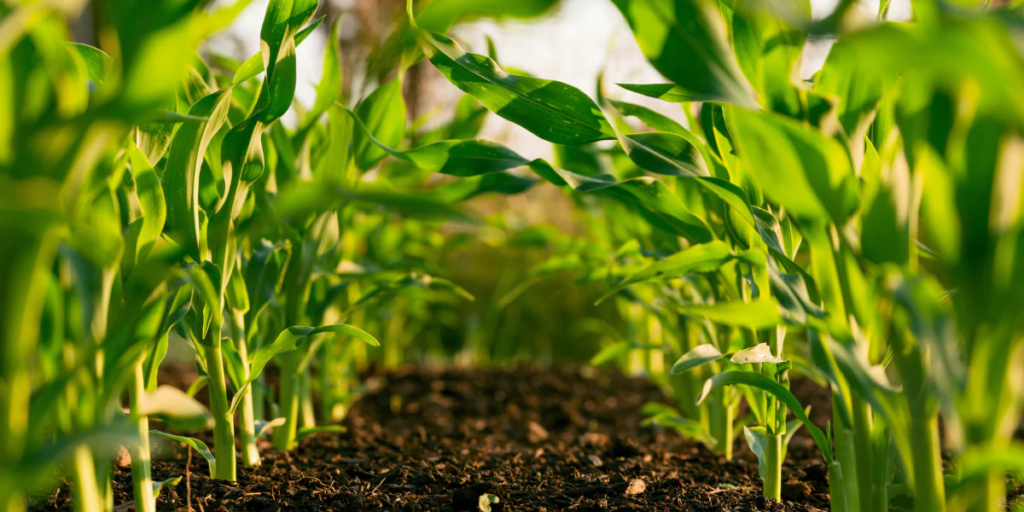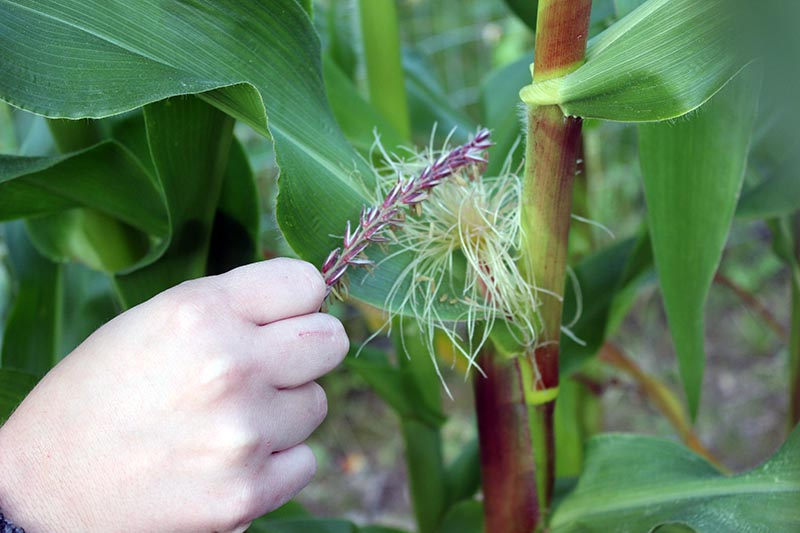Homegrown sweet corn is a summer delight, often enjoyed with butter dripping from each kernel. But there’s nothing more disappointing than harvesting corn with poorly filled cobs. Don’t worry! You can ensure your corn plants produce full, delicious cobs by following these three essential steps to improve pollination and maximize your harvest.
1. Understand Corn Pollination Basics
Corn, a type of grass, relies on wind pollination to thrive. The process starts with the male flowers, known as tassels, at the top of the plant. These tassels release millions of pollen grains into the air, which then need to land on the female flowers lower on the plant. The female flowers, located in the corn ears, have long silks that catch the pollen as it drifts down.
Each silk is connected to a single kernel, so for a cob to be fully filled, every silk must be pollinated. In ideal conditions, a single tassel releases up to five million grains of pollen, enough to pollinate many silks. However, achieving perfect pollination is still a challenge.

2. Plant Corn in a Block Pattern
In large-scale farms, corn is grown in densely packed fields, which naturally ensures excellent pollination. For home gardeners, planting in long rows reduces the chance of good pollen distribution because the plants are spaced too far apart. To improve pollination, plant your corn in a block formation instead. A block allows for better wind circulation and more pollen transfer between neighboring plants.
Aim to space your corn plants about 14-16 inches (35-40 cm) apart in both directions. While it’s common for home gardeners to grow a modest number of plants (around 10 to 50), creating a block structure can still significantly improve your corn’s pollination.

3. Enhance Pollination with Gentle Shaking or Hand Pollination
Improve Wind Pollination: When the tassels are ready to release pollen, gently shake the corn stalks to mimic the natural wind that would normally carry the pollen to the silks. This can be done during mid-morning when the pollen is most viable, after the dew has evaporated but before the temperatures rise above 90°F (32°C), which can reduce pollen viability.

Hand Pollination: If you’re aiming for a foolproof way to ensure every silk is pollinated, hand-pollinating is the way to go. Carefully cut a tassel from the plant using scissors, making sure not to disturb the pollen. Then, gently stroke the tassel over the silks, ensuring each strand is covered. Repeat this process every few days with fresh tassels until the silks turn brown and dry, indicating that pollination has occurred.
Keep the plants well-watered, especially during dry spells, as the silks need moisture to remain receptive to pollen. Water the soil deeply once a week to maintain optimal conditions for pollination.
4. Harvesting Your Perfect Corn
Once the silks have dried out and turned brown, it’s time to check if your corn is ready to harvest. Gently peel back a small portion of the husk and press your fingernail into a kernel. If a creamy liquid oozes out, the corn is ready to be picked. Enjoy the satisfaction of a fully filled cob of sweet corn!
By following these simple but effective steps—understanding corn pollination, planting in a block, and enhancing pollination through shaking or hand-pollinating—you’ll significantly improve the chances of harvesting delicious, fully filled cobs of corn from your garden. Happy gardening!
